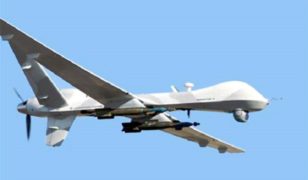Air Force issues ISR RFI
 On April 29, the U.S. Air Force posted a request for information for Battlefield Air Operations-Machine to Machine software (BAO-M2M). Submissions are requested no later than 10:00 AM (Eastern Time) June 30 and should be submitted via e-mail.
On April 29, the U.S. Air Force posted a request for information for Battlefield Air Operations-Machine to Machine software (BAO-M2M). Submissions are requested no later than 10:00 AM (Eastern Time) June 30 and should be submitted via e-mail.
The United States (US) Air Force Life Cycle Management Center (AFLCMC), Intelligence, Surveillance and Reconnaissance & Special Operations Forces (ISR & SOF) Division, Battlefield Airmen Branch (AFLCMC/WISN), Wright-Patterson AFB OH, is requesting information to identify possible sources for, and gauge interest in, the fulfillment of the next generation of the Battlefield Air Operations – Machine to Machine software (BAO – M2M) suite. BAO-M2M is a group of related software programs designed for the Battlefield Airmen to achieve mission-specific capabilities. This RFI is in anticipation of the next Air Force Special Operations Command (AFSOC) increment III Capabilities Development Document (CDD) which is expected to be validated in the 4th quarter of calendar year 2016. The projected BAO-M2M formal Request for Proposal for the subject effort is anticipated to be issued in the 1st quarter of calendar year 2017 following the conclusion of detailed market research and subsequent development/approval of acquisition strategy.
The M2M software suite is anticipated to require working knowledge of the following mission specific areas at a minimum:
- Air Superiority: CCTs maintain positive control of the terminal objective area aviation environment during operations and direct air/ground operations within an Assault Zone. SOWT conduct environmental reconnaissance and austere weather operations to collect, analyze, predict, tailor, and integrate critical hydrographic, geological, and meteorological information.
- Rapid Global Mobility: CCTs provide air traffic control, siting operation of navigational aids, communications, and assault zone selection, assessment, survey, and establishment. SOWTs provide meteorological and oceanographic information in support of pre-deployment, deployment, mission planning, execution, and redeployment including climatological, oceanographic, traffic-ability, avalanche, riverine, solar lunar data, weather forecasts, and forward area observations.
-
Global Persistent Attack: TACPs provide terminal attack control, liaison, mission planning, and coordination on all aspects of joint/combined tactical air support. They integrate air support into the ground scheme of maneuver and are capable of directing all facets of fire support operations. They exercise more rapid and accurate terminal attack control of Close Air Support (CAS), differentiate hostile forces from friendly and non-combatant elements, and report on effects.
-
Global Integrated Intelligence, Surveillance, and Reconnaissance (ISR): ST conduct operational preparation of the environment to include special reconnaissance/surveillance, deep strike (time sensitive/critical targeting), and terminal attack control.
-
Personnel Recovery: PJs perform any combination of the following missions: search and recovery; emergency trauma care; casualty collection, treatment and evacuation; confined space/collapsed structure/technical extrication; team medicine; and high/low angle rescue.
Full information is available here.
Source: FedBizOpps







